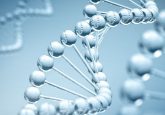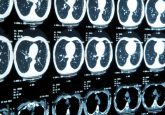Unlocking the potential of the tumor microbiome: an interview with Sandrine Miller-Montgomery

Could microbiome-driven liquid biopsies be the next step in advancing cancer diagnostics? In this interview with Sandrine Miller-Montgomery (Micronoma, CA, USA) we discuss the importance of the microbiome in tumorigenesis as well as its potential as a diagnostic tool.
What role does the microbiome play in tumorigenesis?
While ignored for the longest time, the cancer microbiome plays multiple key roles in tumorigenesis as highlighted in the Science review published in 2021 with Micronoma’s three co-founders, Greg Poore, Rob Knight, and I. Besides a few oncomicrobes (e.g., H. pylori for stomach cancer or HPV for cervical cancers), the role of microbes in oncology had been poorly studied, until recently. But fast forward to 2022 and we are seeing, though only observing the tip of the iceberg, their key role in the biology of cancer: from immunomodulator at the cytokine production level or antigenic mimicry, to direct interaction with the human genome and regulation of somatic mutations.
…fast forward to 2022 and we are seeing, though only observing the tip of the iceberg, their key role in the biology of cancer.
Some intratumoral bacteria such as Fusobacterium have been discovered metabolizing cancer drugs, rendering them in some cases inefficient in the cancer fight. Not one aspect of cancer biology will not benefit from further study of the microbiomes, be it the gut microbiome, the skin, or the oral microbiome, and even more recently observed by our team and others, tissue and circulating microbiomes. This will give rise to so many applications, from early cancer detection to treatment companion diagnostics to minimal residual disease or relapse monitoring, and even prognosis.
How can the cancer microbiome be utilized to create cancer diagnostic technology?
There are two microbiomes that have long been ignored: tissue and circulating microbiomes. The Micronoma team is concentrating on the circulating microbiome at this stage because we have early cancer detection in mind, and being able to do this through a simple blood draw is less invasive than a tissue biopsy. What the team discovered is that the tissue microbiome is very specific in many ways. First, within a given organ, the tissue microbiome in a tumor will be different from the one observed in the adjacent healthy tissue. Then, when looking at cancer tissue, the microbiome is very specific to the cancer type, meaning that a lung cancer tissue microbiome is very different from a breast cancer one, for example. The fact that these differences can be picked up in the blood, as shown in our Nature paper in 2020 is a fantastic new development for liquid biopsy and is what is behind the Oncobiota microbiome-driven liquid biopsy platform. Indeed, through rigorous wet lab and dry lab methodologies, as well as the power of machine learning, the technology is designed to decipher what is potential microbial contamination from what is a real microbiome signature and then deduce what type of cancer a patient may have. We are currently focusing on lung cancer, which is responsible for 25% of all annual cancer deaths due to a lack of early detection of the disease. The platform can be specific and finely tuned so that it is able to differentiate malignant lung lesions from benign ones. The hope is that this will be a major help to accelerate clinicians’ therapeutic decision making and is quite essential in this very fast-evolving disease.
What are the benefits of using microbial tests rather than traditional liquid biopsies for detecting tumors early?
Traditional liquid biopsy methods rely on the detection of human genome alteration coming from cancer cells. These can be mutations, epigenetic changes, or even changes in some protein productions. The issue is that while all these changes are real and important for the diagnosis of cancer, they are rare events and mostly come from the tumor cells. In the early stage of the disease, the tumor cell turnover is still low, meaning that very little signal is making it into circulation, hence, there is a risk of poor performance (namely a high risk of false negatives) in traditional liquid biopsy at the early stage of the disease (Stage I or II). Another issue is that some of the mutations traditionally monitored for cancer detection can be found in circulating white blood cells through clonal hematopoiesis (meaning aging white blood cells are accumulating some of these mutations) and make the traditional liquid biopsies using these biomarkers at high risk of returning false positives. Enter the microbiome as a biomarker. Microbiome is all about the community of bacteria, fungi and viruses—so, it doesn’t rely on the detection of a few oncomarkers, but a multitude of them. This natural “enrichment” of the signal, looking at thousands of specific biomarkers of a given cancer, provides microbiome-driven liquid biopsy with a naturally higher sensitivity and specificity that should be greatly beneficial to the clinical community.
Enter the microbiome as a biomarker. Microbiome is all about the community of bacteria, fungi and viruses—so, it doesn’t rely on the detection of a few oncomarkers, but a multitude of them.
What is the difference between the human microbiome and the cancer microbiome?
If microbiome sciences teach us anything it’s that nothing is in isolation. So, we can’t just talk about the human microbiome versus the cancer microbiome. First, what is the human microbiome? Is this what you would find in stool samples, gut samples, skin, or oral samples? The proper terminology should be human microbiomes, as there are many different profiles within a given body. The cancer microbiome is another human microbiome which happens to be in tissue and specifically in tumor tissue. The origin of tissue microbiome and cancer microbiome specifically is still to be formally established, but it is likely to be a combination of sources from the GI tract, through the skin, the airways… ultimately, what makes a microbiome unique to a location will likely be linked to the microenvironment -this is not referring to the microbial environment, but the microvasculature environment – which greatly affects, for example, the oxygenation or pH levels where different microbes will be able to thrive or not.
In your opinion, what are the advantages of focusing on one cancer at a time rather than conducting pan-cancer screening?
Our discovery indicates that the microbiome can indeed differentiate one cancer type versus many. But before we launched into the platform development, we consulted with many clinicians to figure out what would be more relevant to their practice – being able to detect one cancer type versus others, or one cancer type versus confounded diseases. The latter was overwhelmingly favored. Indeed, when a patient comes to a clinician with a lasting cough, the clinician is not wondering if this could be lung cancer or colorectal cancer, for example. It seems quite obvious that the organ of interest is the lung. What the clinicians will want to know, assuming they do a LDCT (low dose computed tomography) scan and assuming they see a lung nodule, (which LDCT scans are excellent at picking up), is if it is malign or benign, because this drastically affects the course of treatment and the chance of survival if the cancer is confirmed sooner rather than later. That feedback ultimately led us to look at one cancer at a time versus multiple cancers. With that said, we are carefully developing our assays in a manner that would enable us to do a panel of cancer detection, e.g., GI tract focus or women’s health focus… as these would also be relevant to clinicians.
How would you like to see the field evolve over the next 5 years?
We hope that awareness of the utility of liquid biopsy – specifically microbiome-driven liquid biopsy – will keep growing. This means that we want to see continued engagement on the payor side to support proven early detection methodology reimbursement, as it is essential to ensure that patients have access to this type of breakthrough technology.
We hope that awareness of the utility of liquid biopsy – specifically microbiome-driven liquid biopsy – will keep growing.
This should go with increased education on the importance of the microbiome in general, and I am looking forward to this science getting integrated into medical training further so that clinicians have the opportunity to better serve their patients with an increased understanding of its role and importance.
Education of the general public is also on its way, and with good reason. Like much new science, there are a lot of opportunistic (not science-driven) companies doing a disservice to the case of the microbiome. And, just like any other hype, as consumers become more educated, they will debunk these types of businesses.
Finally, while we are focusing on tissue or circulating microbiome and early cancer detection, we hope that we will be inspiring many to look even further into developing other applications, as well as witness the emergence of new oncotherapies inspired by this novel science.
Interviewee profile:
Sandrine Miller-Montgomery, Pharm.D., Ph.D.
 I am the President and CEO of Micronoma, a company originating out of UC San Diego (CA, USA) that is focusing on developing the first minimally invasive microbiome-driven liquid biopsy test that uses microbial nucleic acid to help diagnose cancer at an early stage. Prior to this, I was executive director of the UC San Diego Center for Microbiome Innovation (CMI), which I co-led with Rob Knight. There, I established a world-class team concentrated on expanding industry and academic collaborations in the field of microbiome research. Before that 3-year detour in academia, I had centered my career in industry and worked in large biotech and multinational companies, as well as start-ups. I assumed different responsibilities from R&D director to sales and marketing positions. I seem to excel at setting up companies for successful exits as shown by my work at Helixis, acquired by Illumina (both CA, USA), or Mo Bio Labs acquired by QIAGEN (Hilden, Germany). Trained as a molecular biologist, focusing on human genome analysis, my view of life sciences dramatically broadened when I encountered the untapped scientific potential of the microbiome more than 10 years ago. My passion is to use an integrative view of genomic and metagenomic analysis to accelerate life science discovery in a way that prioritizes patients.
I am the President and CEO of Micronoma, a company originating out of UC San Diego (CA, USA) that is focusing on developing the first minimally invasive microbiome-driven liquid biopsy test that uses microbial nucleic acid to help diagnose cancer at an early stage. Prior to this, I was executive director of the UC San Diego Center for Microbiome Innovation (CMI), which I co-led with Rob Knight. There, I established a world-class team concentrated on expanding industry and academic collaborations in the field of microbiome research. Before that 3-year detour in academia, I had centered my career in industry and worked in large biotech and multinational companies, as well as start-ups. I assumed different responsibilities from R&D director to sales and marketing positions. I seem to excel at setting up companies for successful exits as shown by my work at Helixis, acquired by Illumina (both CA, USA), or Mo Bio Labs acquired by QIAGEN (Hilden, Germany). Trained as a molecular biologist, focusing on human genome analysis, my view of life sciences dramatically broadened when I encountered the untapped scientific potential of the microbiome more than 10 years ago. My passion is to use an integrative view of genomic and metagenomic analysis to accelerate life science discovery in a way that prioritizes patients.
The opinions expressed in this interview are those of the author and do not necessarily reflect the views of Oncology Central or Future Science Group.
In association with:
For more information on Micronoma, make sure to check out their LinkedIn, Facebook and Twitter accounts!






